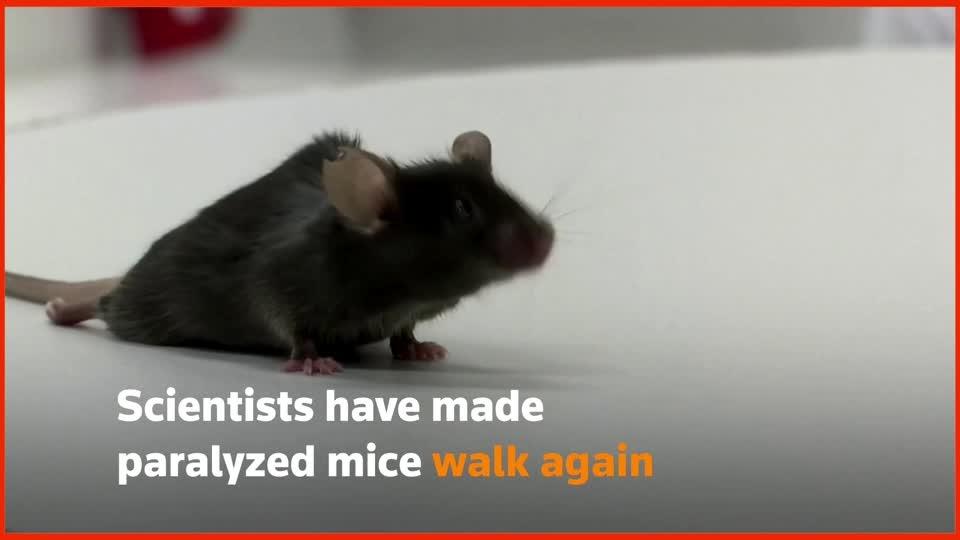German scientists make paralyzed mice walk again
By Stephane Nitschke, Zuzanna Szymanska
(Reuters) - German researchers have enabled mice paralyzed after spinal cord injuries to walk again, re-establishing a neural link hitherto considered irreparable in mammals by using a designer protein injected into the brain.
Spinal cord injuries in humans, often caused by sports or traffic accidents, leave them paralyzed because not all of the nerve fibers that carry information between muscles and the brain are able to grow back.
But the researchers from Ruhr University Bochum managed to stimulate the paralyzed mice’s nerve cells to regenerate using a designer protein.
“The special thing about our study is that the protein is not only used to stimulate those nerve cells that produce it themselves, but that it is also carried further (through the brain),” the team’s head Dietmar Fischer told Reuters in an interview.
“In this way, with a relatively small intervention, we stimulate a very large number of nerves to regenerate and that is ultimately the reason why the mice can walk again.”
Slideshow ( 5 images )The paralyzed rodents that received the treatment started walking after two to three weeks, he said.
The treatment involves injecting carriers of genetic information into the brain to produce the protein, called hyper-interleukin-6, according to the university’s website.
德国科学家让瘫痪的老鼠再次行走

(路透社)-德国研究人员使脊髓损伤后瘫痪的小鼠能够再次行走,通过使用注入大脑的设计蛋白重新建立了迄今为止被认为无法在哺乳动物中修复的神经联系。
通常由运动或交通事故引起的人类脊髓损伤使他们瘫痪,因为并非所有在肌肉和大脑之间传递信息的神经纤维都能长出。
但是波鸿鲁尔大学的研究人员设法利用一种设计蛋白刺激了瘫痪小鼠的神经细胞再生。
研究小组负责人迪特玛·菲舍尔(Dietmar Fischer)在接受路透社采访时说:“这项研究的特殊之处在于,这种蛋白质不仅被用来刺激那些自身产生的神经细胞,而且还可以被进一步携带(通过大脑)。”
“通过这种方式,通过相对较小的干预,我们就能刺激大量神经再生,这最终就是小鼠再次行走的原因。”
他说,接受治疗的瘫痪的啮齿动物在两到三周后开始行走。
根据该大学的网站,这种治疗包括将遗传信息的载体注入大脑以产生一种称为“白介素6”的蛋白质。